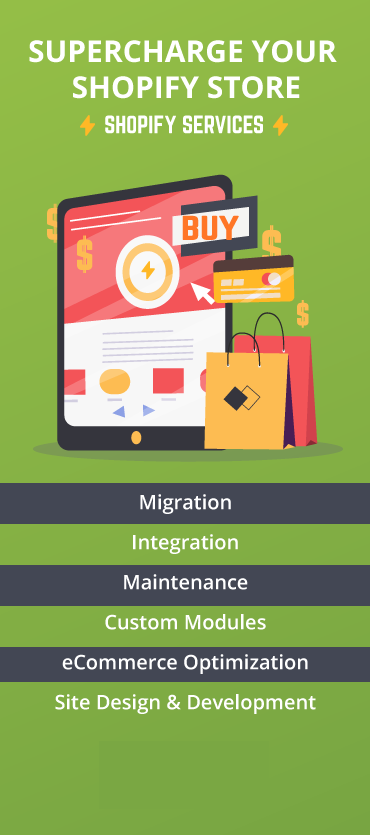Think of your business like Andy’s toy box in Toy Story—full of different systems (toys) that don’t always work together. Your eCommerce store, CRM, OMS, and ERP might be operating like Woody and Buzz before they became friends—disconnected, chaotic, and struggling to keep up.
This lack of integration can lead to inefficiencies, data silos, and a fragmented customer experience, making it harder to compete in the fast-paced omnichannel environment.
That’s where Shopify steps in, like the ultimate “Buzz Lightyear” upgrade, providing built-in capabilities for eCommerce, CRM, OMS, and even ensuring seamless integrations for any missing links (like ERP).

It provides a centralized, future-ready commerce ecosystem where all your systems seamlessly work together, eliminating scattered data, inefficient workflows, and frustrating customer experiences. Whether setting up an online store, expanding to in-person sales, or managing operations across multiple channels, Shopify can simplify and streamline the entire process.
- Globally, over 5.6 billion websites are built and powered with Shopify.[i]
- Shopify has a market share of 17.50% in the eCommerce platform market.[ii]
But how do you know if it’s time to migrate your eCommerce store to Shopify? In this blog post, we’ll explore clear signs that your current platform is holding you back—and how switching to an integrated platform like Shopify can help streamline your business operations and enhance efficiency.
8 Signs That It’s Time to Migrate Your eCommerce Store to Shopify
Recognizing the right time to migrate your eCommerce store to Shopify can significantly impact your customer experience and business’s growth. Here are five key indicators that signal it’s time to make the switch:

1. High Maintenance Costs Are Eating Into Your Profits
Self-hosted platforms require ongoing investment in hosting, security patches, and infrastructure upgrades—costs that add up over time. Shopify’s fully managed SaaS model eliminates these expenses by providing automatic updates, built-in security, and scalable infrastructure. With no server maintenance or manual upgrades, businesses can switch to Shopify to reduce IT overhead, ensure site reliability, and allocate resources toward growth and customer experience.
2. Your eCommerce Platform Lacks the Scalability to Support Growth
If your international sales are growing, but your platform isn’t keeping up, it’s time to migrate. Many legacy eCommerce platforms struggle with multi-language support, currency conversion, and regional tax calculations, making global expansion unnecessarily complex. Shopify’s Markets feature simplifies cross-border selling by automatically adjusting pricing, taxes, and duties for different regions. Additionally, Shopify Payments supports multiple currencies, while Shop Pay Installments lets customers pay flexibly, increasing conversions in new markets.
3. Your Mobile Shopping Experience Is Lacking
With over 70% of eCommerce traffic coming from mobile devices, a poor mobile experience can drastically impact sales.[iii] If your platform isn’t mobile-optimized, complexities like slow load times, unresponsive design, and a lengthy checkout process can drive customers away. Shopify’s mobile-first themes ensure a seamless shopping experience across devices. Shop Pay’s one-click checkout speeds up mobile purchases, reducing friction and boosting mobile conversion rates. Merchants using Shop Pay report 18% higher repeat purchases due to its seamless experience.[iv]
4. Limited Features and Integration Capabilities Are Holding Back Your Growth & Efficiency
Modern eCommerce businesses need a platform that seamlessly integrates with marketing automation tools, CRM systems, and analytics platforms, without requiring extensive development work. If your current platform demands custom coding for every integration or has a complex interface that slows down daily operations, it’s holding you back. Shopify simplifies this with a rich app ecosystem of over 8,000 apps for marketing, inventory management, and AI-driven personalization.
Additionally, its Commerce Components provide API-driven flexibility, enabling enterprise businesses to integrate effortlessly with existing systems. Shopify’s user-friendly dashboard, drag-and-drop store builder, and automation tools further streamline operations, making store management intuitive for teams of all skill levels.
5. Expanding to New Sales Channels Feels Overwhelming
Your eCommerce platform is holding you back if selling on social media, marketplaces, and in-store requires complex integrations or workarounds. Shopify’s native multichannel selling enables businesses to list products on Instagram, Facebook, Amazon, and Google Shopping effortlessly, ensuring a unified commerce experience.
6. You’re Struggling With Inventory and Order Management
If managing stock across multiple sales channels is challenging, your platform may lack robust inventory management features. Shopify’s centralized dashboard syncs inventory across online stores, marketplaces, and POS systems in real-time, preventing overselling and streamlining fulfillment.
7. You’re Missing the Power of Personalized Shopping
You’re missing key engagement opportunities if your eCommerce platform lacks data-driven personalization. Shopify provides built-in tools like AI-driven product recommendations, Shopify Email for targeted campaigns, and Shopify Flow for automating personalized marketing actions. Its centralized customer data platform unifies insights for tailored shopping experiences, boosting customer satisfaction and loyalty. By utilizing these features, businesses can enhance personalization, increase conversions, and drive long-term customer engagement.
8. Security and Compliance Are Becoming a Concern
As cyber threats evolve, security lapses can lead to data breaches, chargebacks, and loss of customer trust. Self-hosted platforms require constant updates to comply with PCI standards and prevent fraud. PCI DSS Level 1 compliant, Shopify provides built-in security with end-to-end encryption, automated fraud analysis, and real-time monitoring. Furthermore, Shop Pay adds another layer of protection with encrypted payment details, biometric authentication, and fraud detection algorithms, making transactions safer for businesses and customers.
Related Read: Redefine Enterprise Retail With Commerce Components by Shopify
Break Free & Scale: The 5-Step Shopify Migration Roadmap
Migrating to Shopify is a strategic move for businesses looking to reduce costs, enhance performance, and future-proof their eCommerce operations. With its scalability, personalization tools, security, and streamlined checkout experience, Shopify is the ideal platform for growing brands ready to elevate their online presence. Here’s how you can proceed with the migration:
- Import Your Store’s Data: Transfer products, customers, orders, and content using an automated migration tool or manual method.
- Customize Your Storefront: Choose and personalize a theme from the Shopify Theme Store to match your brand.
- Set Up Payments & Shipping: Enable secure payment gateways and configure shipping rates, zones, and fulfillment methods.
- Test & Optimize: Run test orders to ensure smooth checkout, payment, and fulfillment before launch.
- Connect Your Domain & Finalize SEO: Link your domain, optimize metadata, and refine URLs for better search rankings.
Following a defined migration checklist can help ensure a seamless transition, minimizing downtime and avoiding data loss. Proper testing and optimization can further enhance performance, empowering your businesses to maximize the benefits of Shopify from day one.
Related Read: Shopify Editions Winter 2025
However, without a planned and structured Shopify migration approach, businesses can face data loss, design inconsistencies, and integration issues. A Shopify development services partner, like Grazitti Interactive, can ensure seamless migration, custom theme development, secure integrations, and optimized store performance, empowering businesses to transition smoothly while maximizing their store’s potential.
References:
[i] Trends BuiltWith
[ii] 6Sense
[iii] Outerbox
[iv] Swipe Sum













